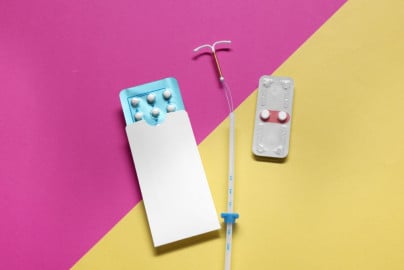Blog

When Is It Time to Switch Your Birth Control Method?
Choosing the right birth control isn’t just a one-time decision; it’s something that can (and often should) evolve as your body, lifestyle, and goals change. Whether you’ve been dealing with unpleasant side effects or simply want something more convenient, switching to a new method might make a big difference in how you feel, both physically and emotionally.
At Pacific Women’s OB/GYN, we’re here to help you navigate those changes with care and clarity.
Common Reasons People Switch Birth Control
There’s no “one size fits all” when it comes to contraception. What worked for you five years ago may not feel like the right fit today—and that’s perfectly normal. Some of the most common reasons patients consider switching include:
- Uncomfortable side effects: Everybody responds differently. If you’re experiencing changes like acne, spotting, nausea, weight shifts, or breast tenderness that are interfering with your quality of life, it might be time to explore other options.
- Lifestyle changes: Traveling frequently? Tired of remembering a daily pill? Long-acting methods like the implant or IUD can offer hassle-free protection.
- Family planning: Maybe you’re thinking about getting pregnant soon, or not for a long time. Either way, your contraceptive plan should match your timeline.
- Age and hormone shifts: As you move through different life stages, your body and hormone levels shift. Your birth control should support, not disrupt, that balance.
What to Consider in Your 20s, 30s, and 40s
Your reproductive goals and health profile will likely change with time. Here's how your needs may shift and how your birth control can adapt with you:
- In your 20s, you may need greater flexibility. Whether you’re focused on career, travel, or just want reliable protection, long-acting reversible contraceptives (LARCs) like the IUD or implant are popular choices. They’re effective, low-maintenance, and easily removed if your plans change.
- In your 30s, you might be thinking more seriously about family planning. The IUD and implant still offer great reliability with the option to stop anytime. If you’re not planning a pregnancy soon, they can help space out your timeline without daily effort.
- In your 40s, your fertility may begin to decline, but it is still possible to get pregnant until you’ve reached menopause. Therefore, birth control remains important during this time if you do not wish to become pregnant. While any birth control option is viable, estrogen-containing birth control, such as the skin patch, vaginal ring, and certain forms of the pill, can help manage symptoms of perimenopause. However, make sure to speak with your provider about any risk factors, as estrogen-containing birth control can also raise your risk of blood clots, heart attack, and stroke. Additionally, if you're certain you don't want to have children in the future, you may also consider permanent options like tubal ligation (or your partner’s vasectomy), which can offer peace of mind.
Questions to Ask Your OB/GYN
When considering a change, bring your thoughts and questions to your next appointment. Some good conversation starters include:
- “What are the pros and cons of each method for someone in my age group?”
- “How quickly can I get pregnant after stopping this method?”
- “Are there non-hormonal options that might work for me?”
- “What should I do if I experience side effects?”
We’re Here for Every Step
At Pacific Women’s OB/GYN, we understand that choosing birth control is a personal decision. What matters most is finding something that works for your body, your lifestyle, and your future plans. Our providers will take the time to understand your needs and guide you through all your options with compassion and expertise.
Your goals and lifestyle may change, and your birth control can change with you. We’re here to help you make choices that feel right, every step of the way. Schedule an appointment to explore more birth control options that better fit your needs.
Back to blog